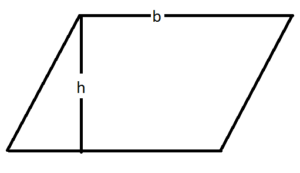
The area of a parallelogram is a fundamental measurement in geometry, representing the region enclosed by its four sides. A parallelogram is a quadrilateral with opposite sides running in parallel, and the lengths of these opposite sides are equal.
To calculate the area of a parallelogram, you can use the following formula:
Area = base × height
In this formula, ‘base’ refers to the length of one of the parallel sides, and ‘height’ represents the perpendicular distance between the base and its opposite parallel side.
By applying the formula mentioned above, you can determine the precise area of the parallelogram. The product of the base and height provides the total enclosed space.
Understanding the area of a parallelogram is essential in various fields, such as engineering, architecture, and mathematics. It plays a crucial role in calculating surface areas, designing structures, and solving geometric problems.